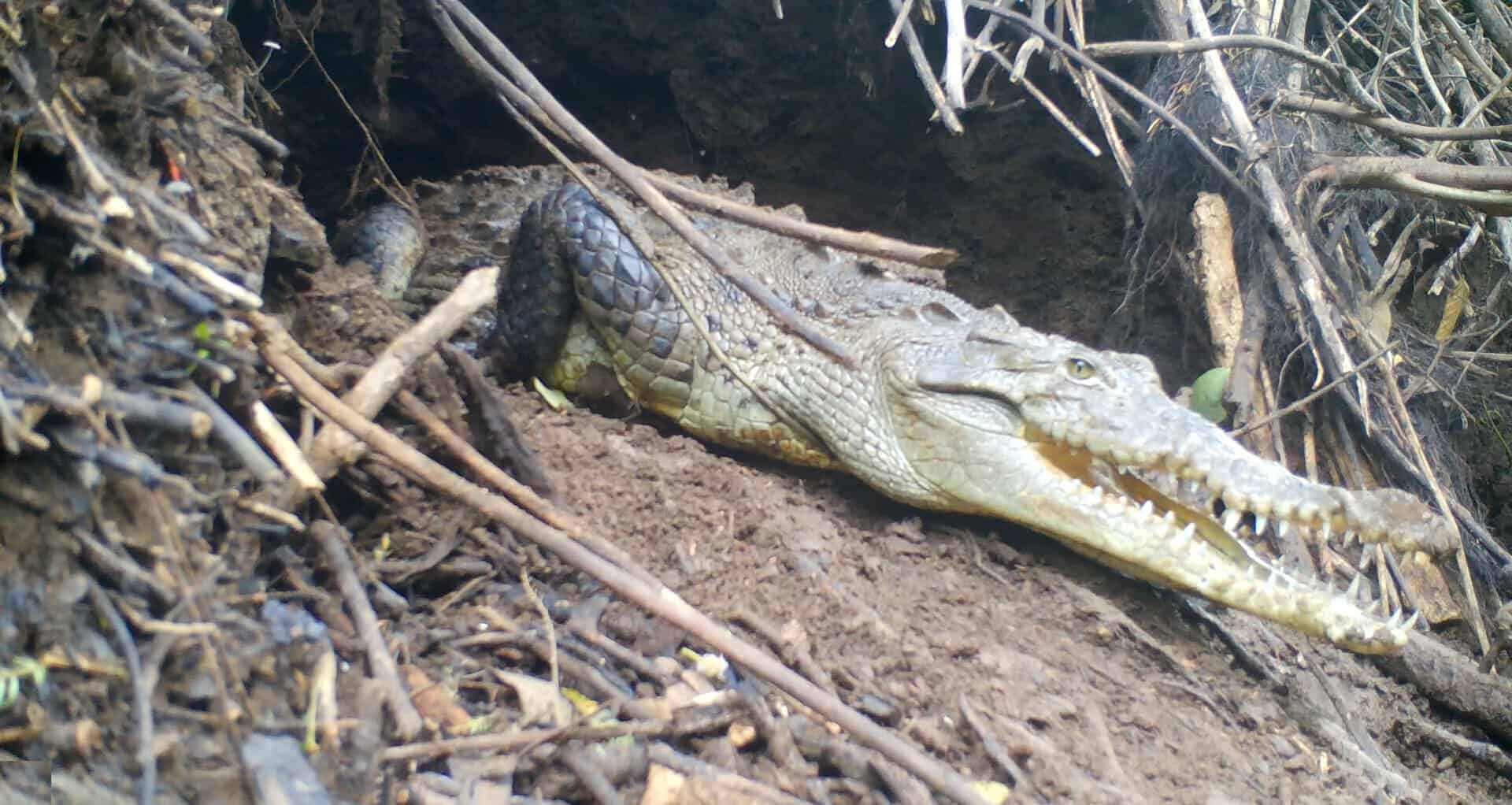Have you ever been in a dangerous situation but not realize it until later? It’s happened to me a few times while working in the field. Recently, I was walking down a dry riverbed wandering around slowly, searching the gravel for old pieces of pottery that can sometimes be spotted amongst the stones.
As I reached down to grab a piece that looked like it was once the edge of a pot, an enormous tree crashed down twenty meters from where I was standing. Something like 30 seconds before, I was standing under that tree. I was in terrible danger and didn’t even know it.
Perhaps the best example of such a situation occurred a couple of years ago when I came across a hole in an embankment about three feet in diameter. I was in Guanacaste during the late stages of dry season. I was in the forest alone about a 45-minute hike from my truck.
Leaving the truck, I hiked through the forest down a steep hillside to where the forest transitioned into an estuary/mangrove. There was a river that fed the mangrove throughout much of the year but during dry season it dried up completely. I was walking up the dry riverbed, going to check one of the five or so camera traps that I had on the property when I decided to inspect a part of the riverbed that I usually walked around because a bunch of thorny bushes made it easier to skip that section.
I chopped my way past the thorns and came into an area shaped like a big bowl with the edges of the river being steep enough to be over my head on either side. As I walked into the bowl, I noticed a large hole in the riverbank, and as I approached, I noticed what I thought was a mess of black spiny-tailed iguanas tumbling over one another while escaping back into the depths of the hole.
I’ve come across what amounts to colonies of black spiny-tailed iguanas living together in holes before, but all of the other examples that I had ever seen were holes with a diameter of one foot at the most. This hole seemed oddly huge for iguanas. I walked over to inspect the hole more closely. I stood directly in front of it, looked at it, sniffed it. I stuck my head in there a little bit to see how deep it was, but it was too dark to see how far back it went.
Being the camera trap guy that I am, I thought the only way to discover the mysteries of this hole was to place a camera trap at the opening. There was a piece of log sticking out of the bank of the river a few feet from the hole, so I screwed the camera mount into the log, stuck the camera onto the mount, and went about my business.
A few weeks later, I returned to the property to review my cameras. When I have a camera trap in a new and interesting place, it’s all I think about until it’s time to review it, so I had been thinking about the riverbank hole camera the whole time. I hiked my way back there, sat down next to the hole, unscrewed the camera, and started reviewing the videos.
The first video showed an ocelot fearfully inspecting the outer edges of the hole. The next video showed the same ocelot approach the entrance, peer inside, then turn and run away when a crocodile appeared from the depths of the hole and then exploded out after the ocelot, bumping into the camera. I got up and ran.
It’s a crocodile cave! My thoughts immediately went to a few weeks prior when I stuck my stupid head into that hole and there was almost definitely a crocodile inside of it. Further inspection of the videos showed that I hadn’t seen iguanas tumbling over one another when I approached the hole, it was a pile of baby crocodiles retreating into the hole seeking the protection of their mother.
This camera was a gold mine. It showed the female crocodile passing in and out of the hole day and night, it showed ocelots and common black hawks attempting to eat the juvenile crocodiles and the female aggressively defending them, it even recorded some absolutely wild videos of the female interacting with what must be an adult male crocodile, doing some insane bellowing at one another.
I replaced the camera back onto its camera mount, this time being much careful around the opening of the cave. My heart soared with the thought that I was going to be able to monitor this cave indefinitely, getting a never-ending supply of amazing crocodile videos. After a few weeks of excited waiting, it was finally time to return to the cave.
In the prior days the rainy season had begun and the bowl area that held the crocodile cave had flooded, destroying my camera. There were a few more cool videos before the flood, so at least there was that. I put a new camera on the cave and hoped for better luck next time. During my next visit, I found that the cave had completely collapsed.
So it was a short run of a little over a month monitoring the crocodile cave. The resulting videos were some of the very best that I’ve ever recorded. I couldn’t be any happier to share the video below with you.
About the Author
Vincent Losasso, founder of Guanacaste Wildlife Monitoring, is a biologist who works with camera traps throughout Costa Rica. Learn more about his projects on facebook or instagram. You can also email him at: vincent@guanacastewildlifemonitoring.com






